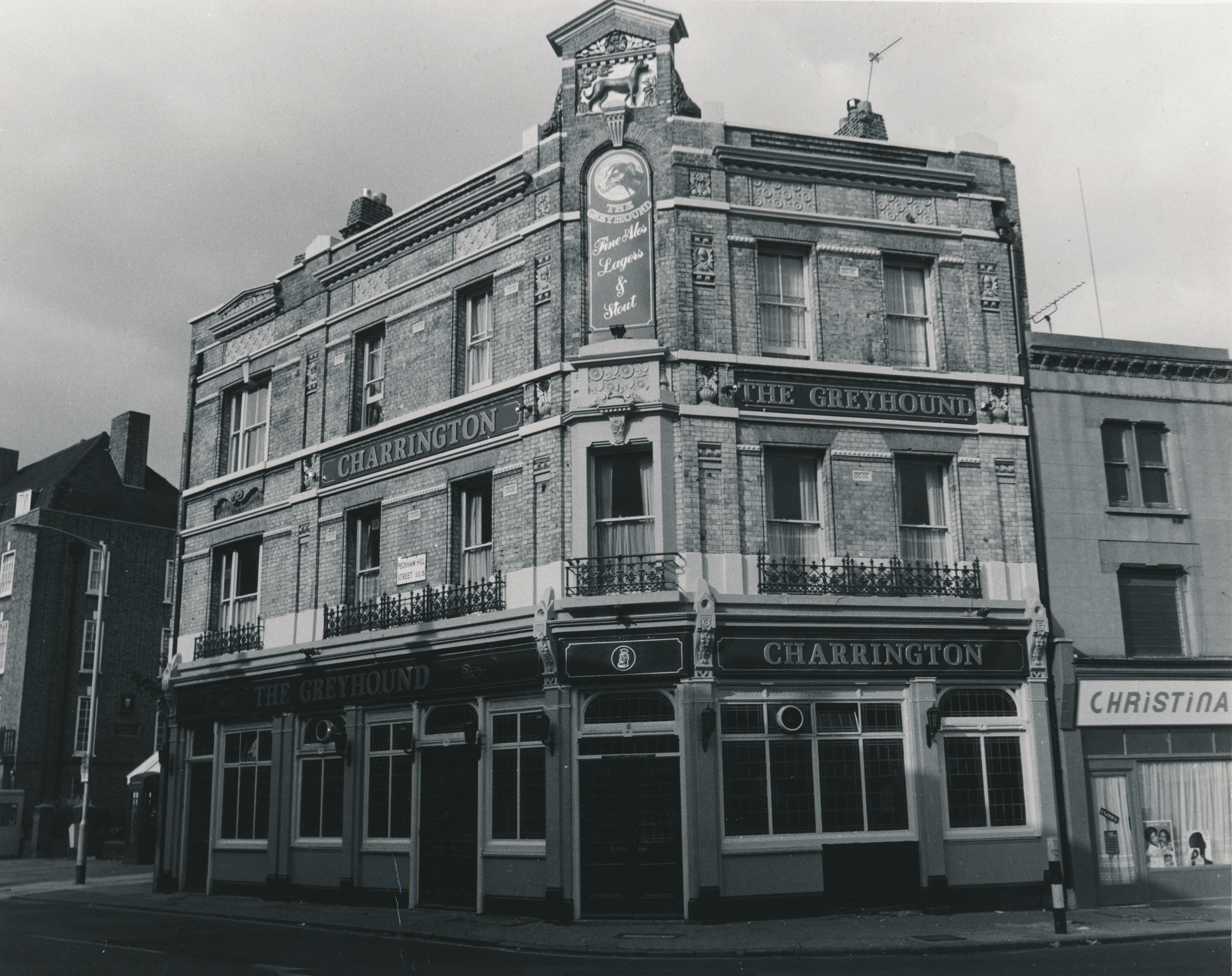The Greyhound, 109 Peckham High Street

This public house is identified as part of a heritage cluster on the Peckham Townscape Heritage Initiative map of town centre priority projects. Happily it is one property that, without prompting, has been freshened up by its owner so it’s an exemplar of what is possible in a generally run down, tired high street. The present building dates only from the 1880s, and apart from television screens is a specimen of an authentic Victorian hostelry, with old racing scenes on its walls, sculptures of greyhounds everywhere, and, as far as I could judge, a clientele intensely interested in the running of their current equivalents.

More interesting, however, is its predecessor, for it dates back to at least the 17th century, and was situated at what was then the very hub of the village. I was already aware of a playbill from 1807 which located Peckham Theatre as “Opposite the Greyhound, Peckham” (shown above), but was delighted to find among Bill Marshall’s papers at Southwark’s Local History Library a reference to rubbings of Greyhound trade tokens dating from 1660. Further enquiry brought out a copy of these rubbings (shown below), inscribed on the obverse “WILL ERBERYAT THE”, with a greyhound running, and on the reverse “GRAYHOUND IN PECKHAM”, with the initials W.M.E.

Now this is interesting in itself, but more so in that greyhound racing is said to have originated only in the 19th century. Coursing preceded this, first described by Arrian in c.180AD, and codified in Britain during the reign of Elizabeth I. It appears, however, to have been essentially an aristocratic activity, until the first club meeting, at Swaffham, Norfolk, in 1776. Here from Peckham, perhaps, is something intriguing for canine historians.
Derek Kinrade – Feb 2018
